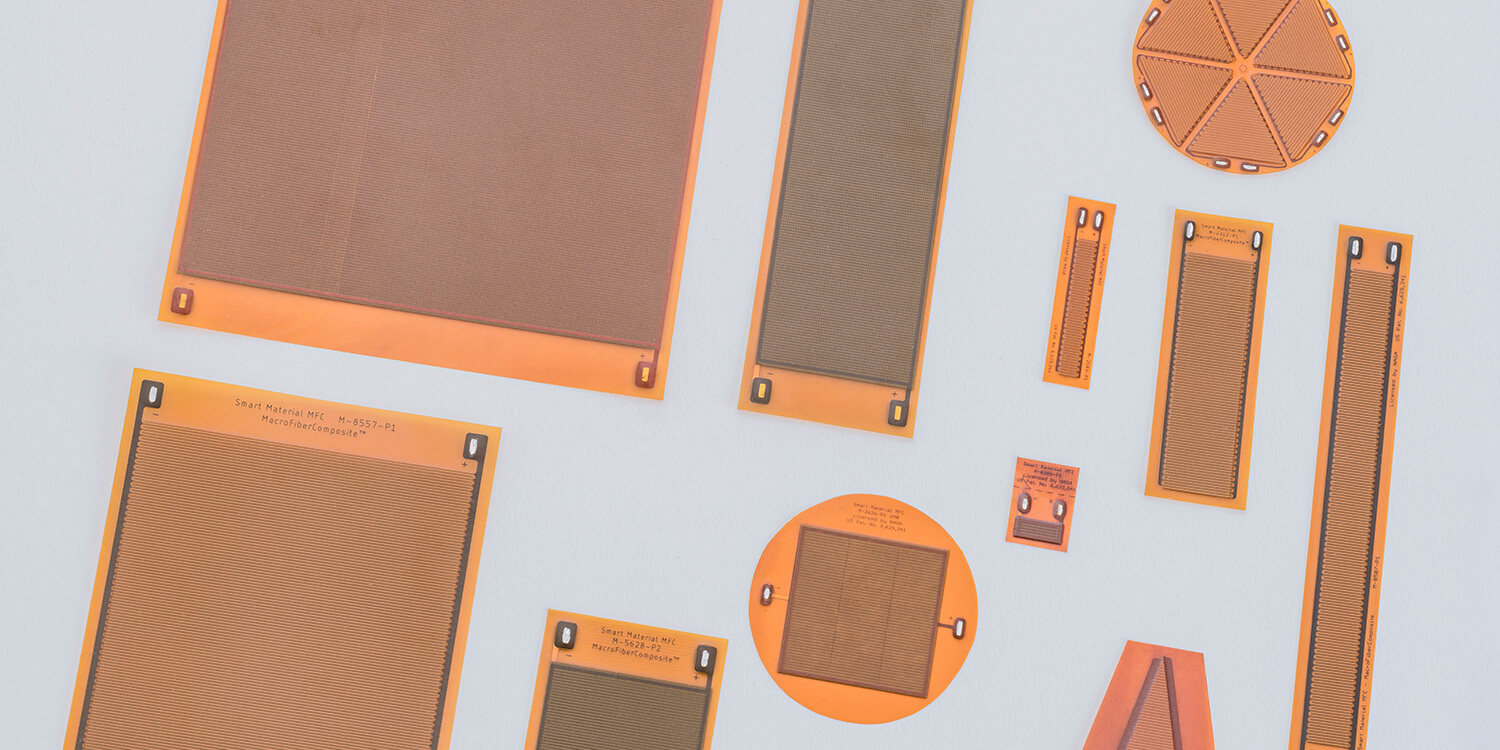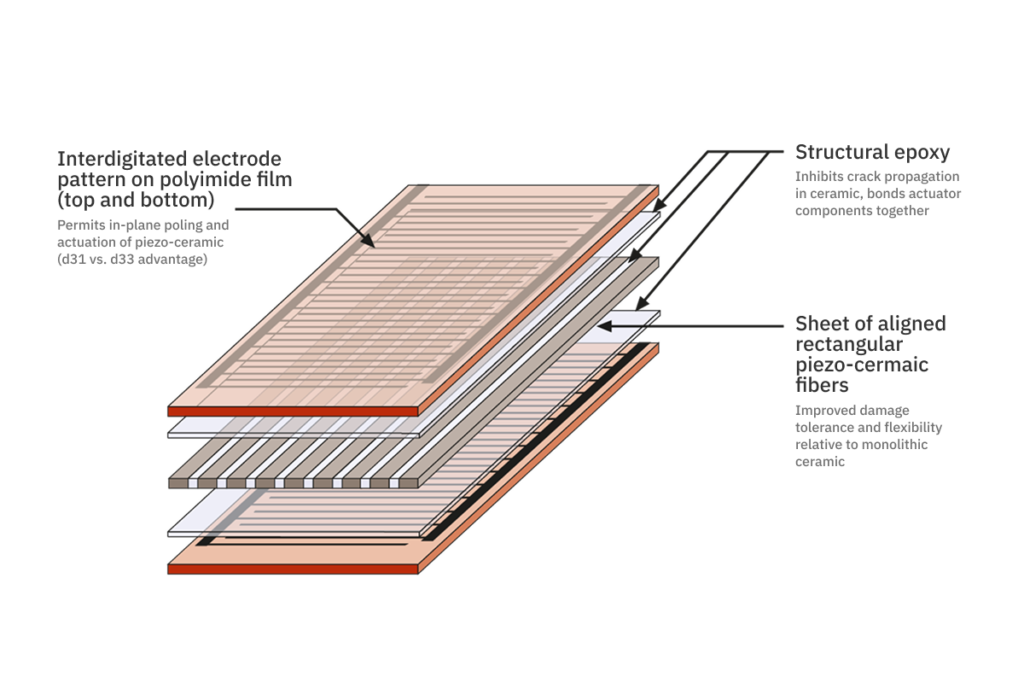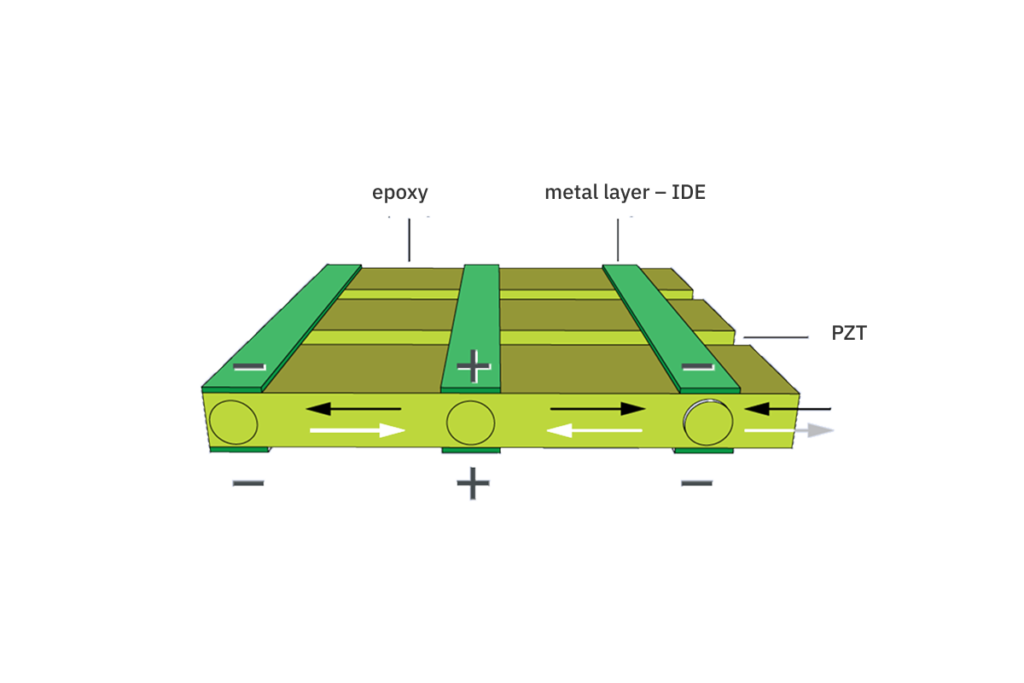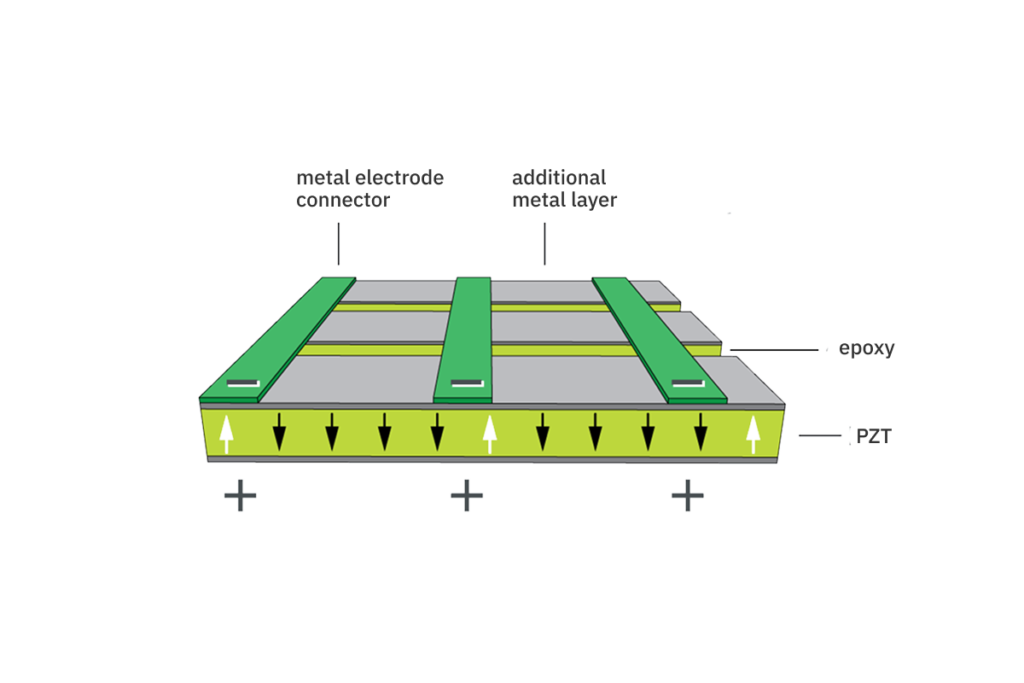



Blocking force (max.) | 28N to 1kN depending on width of MFC |
Operating voltage (max.) | P1, S1, F1: -500V – 1500V P2, P3: -60V – 360V P2 Single Crystal: 0V – 500V |
Operating frequency (max.) | Actuator: 10kHz Sensor, Harvester <1MHz |
Lifetime (avg.) | Actuator: 10E+9 cycles Sensor: 10E+11 cycles (< 400ppm) Harvester:10E+10 cycles (< 600ppm) |
Thickness (avg.) | 300µm, 12mil |
Capacitance (avg.) | P1, S1, F1: 2nF – 12nF P2, P3: 25nF – 200nF |
High-field (|E| > 1kV/mm), biased-voltage-operation piezoelectric constants: | ||
d33 P1 type, in rod direction | 4.6E+02 pC/N | 4.6E+02 pm/V |
d31 P2 type, in electrode direction | -2.1E+02 pC/N | -2.1E+02 pm/V |
Low-field (|E| < 1kV/mm > 300V), unbiased-operation piezoelectric constants: | ||
d33 P1 type, in rod direction | 4.0E+02 pC/N | 4.0E+02 pC/N |
d33 P1 type, in rod direction | -1.7E+02 pC/N | -1.7E+02 pC/N |
Average free-strain per volt (low-field – high-field) for d33 P1 type in rod direction | ~ 0.75 – 0.9 ppm/V | ~ 0.75 – 0.9 ppm/V |
Average free-strain per volt (low-field – high-field) for d31 P2 type in rod direction | ~1.1 – 1.3 ppm/V | ~1.1 – 1.3 ppm/V |
Free-strain hysteresis in rod direction | ~ 0.2 | ~ 0.2 |
DC poling voltage, Vpol for d33 P1 type | +1500V | +1500V |
DC poling voltage, Vpol for d31 P2 type | +360V | +360V |
Poled capacitance @ 1kHz, room temp, | ~ 0.30 nF/cm² | ~ 1.94 nF/in² |
Poled capacitance @ 1kHz, room temp, | ~ 7.8 nF/cm² | ~ 50 nF/ in² |
Orthotropic Linear Elastic Properties (constant electric field): | ||
Tensile modulus, E1 in rod direction | 30.336 GPa | 4.4E+06 psi |
Tensile modulus, E1 in electrode direction | 15.857 GPa | 2.3E+06 psi |
Poisson’s ratio, v12 | 0.31 | 0.31 |
Poisson’s ratio, v21 | 0.16 | 0.16 |
Shear modulus, G12 rules of mixture estimate | 5.515 GPa | 8.0E+05 psi |
Operational Parameters: | ||
Maximum operational positive voltage Vmax for d33 P1 type | +1500 | +1500V |
Maximum operational positive voltage Vmax for d31 P2 type | +360V | +360V |
Maximum operational negative voltage Vmin for d33 P1 type | -500V | -500V |
Maximum operational negative voltage Vmin for d31 P2 type | -60V | -60V |
Linear-elastic tensile strain limit¹ | 1000 ppm | 1000 ppm |
Maximum operational tensile strain¹ | < 4500 ppm | < 4500 ppm |
Recommended tensile strain for Energy Harvesting | < 600 ppm | < 600 ppm |
Peak work-energy density | ~48800 Nm/m³ | ~7 in-lb/in³ |
Temperature and Lifetime Parameters: | ||
Minimum operating temperature all Versions | -35°C | -31°F |
Maximum operating temperature Standard Version | < 85°C | < 176°F |
Maximum operating temperature HT Version | < 130°C | < 266°F |
Operational lifetime (@ 1kVp-p) | > 10E+09 cycles | > 10E+09 cycles |
Operational lifetime (@ 2kVp-p, 500VDC) | > 10E+07 cycles | > 10E+07 cycles |
Operational Bandwidth: | ||
Operational bandwidth as actuator high electric field | 0Hz up to 10 kHz | 0Hz up to 10 kHz |
Operational bandwidth as actuator low electric field levels (< 33% of max operating voltage) | 0Hz up to 700kHz | 0Hz up to 700kHz |
Operational bandwidth as sensor | 0Hz up to 1 MHz | 0Hz up to 1 MHz |
Additional mechanical parameters: | ||
Thickness of all MFC types | 300µm, +-10% | 12 mil +-10% |
Volume Density, active area | 5.44 g/cm³ | 5.44 g/cm³ |
Area Density, active area | 0.16 g/cm² | 0.16 g/cm² |
Downloads

Expansion, Bending, Torsion

